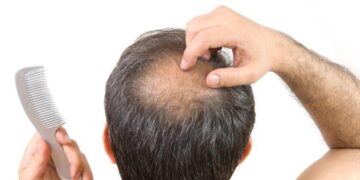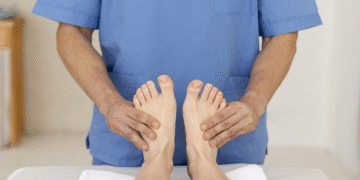Body contouring procedures help people refine their shape, often after significant weight loss or simply to boost their appearance and confidence. But like any medical procedure, they can carry certain risks. Understanding these risks clearly and compassionately helps you make informed choices that balance your aesthetic goals with your overall health and safety.
Common Body Contouring Procedures
Body contouring covers several surgical and non-surgical methods to reshape your body by removing excess fat or skin. Common procedures include:
Liposuction: Removes stubborn fat through small incisions using suction.
Tummy Tuck (Abdominoplasty): Removes excess skin and fat from the belly (abdomen), tightening underlying muscles.
Other Tucks: techniques for arms, thighs, and buttocks.
Liposuction: What You Need to Know
Liposuction targets fat pockets that diet and exercise alone can’t shift. A surgeon makes small incisions and uses a skinny tube attached to suction equipment to remove fat. Sometimes vibration is used to break down fat first. It is not a weight-loss solution but rather a tool to sculpt and smooth contours. Risks include uneven results, fluid buildup, or infections if proper aftercare is not followed.
Understanding Tummy Tucks
A tummy tuck removes excess abdominal skin and fat and tightens stretched muscles. It’s beneficial for post-pregnancy looseness or after substantial weight loss. A horizontal incision allows the surgeon to lift the skin and tighten underlying muscles. Recovery typically takes a few weeks, with limited activities to ensure proper healing. Patients should expect some scars, though they usually fade significantly over time.
Other Available Techniques
Additional methods include:
Power-assisted Liposuction (PAL): Uses vibration to break down fat.
S.A.F.E Liposuction: reduces uneven results by grafting small amounts of fat.
Injection Lipolysis (e.g., Kybella): Targets small areas, like under the chin.
Laser Treatments: Quick, non-invasive options with minimal downtime.
Ultrasound-assisted Liposuction: Uses sound waves to break down fat but heats up and can burn the overlying skin.
Radiofrequency Treatments: Combines heat and suction to tighten skin but can burn the overlying skin.
Cool Sculpting: Combines extreme cold to tighten skin but can burn the overlying skin.
Choosing the right procedure depends on your anatomy, aesthetic goals, and risk tolerance.
Risks and Side Effects
All body contouring treatments carry potential risks. While modern techniques like PAL and SAFE have reduced complications, understanding these risks ensures a safer outcome.
Common Complications
Infections and Bleeding: Risks increase with surgery if sterilization and care protocols aren’t strictly followed. Proper pre- and post-operative care, including antibiotics and using an accredited surgical center, significantly reduces these risks.
Scarring and Nerve Damage: Surgical procedures always involve some scarring. Tummy tucks generally leave more noticeable scars compared to liposuction. Rarely, scars can become thick or raised, needing further treatment. Nerve damage, causing numbness or chronic discomfort, rarely occurs but can often be managed through careful surgical techniques and post-operative therapies.
Rare but Serious Complications
Severe but rare risks include (Dr. Freedland has not seen any of these, even having performed 10,000 procedures):
Fat Embolism: Fat entering the bloodstream, potentially blocking circulation.
Tissue Necrosis: Tissue death from compromised blood flow.
Organ Damage: Very uncommon but serious.
Cryolipolysis: Is a more non-surgical method that can rarely cause systemic issues, such as reactions to cooling treatments.
Choosing a qualified, experienced surgeon greatly reduces these serious risks.
Comparing Surgical and Non-Surgical Risks
Surgical options typically have higher risks due to anesthesia, longer recovery, and tissue trauma. Non-surgical procedures usually involve minimal downtime and fewer complications but offer far less dramatic results, often requiring multiple sessions.
How to Minimize Risks
Pre-Procedure Assessments
A thorough medical evaluation, including blood tests, medical history review, and assessment of skin quality, is essential. For patients with underlying conditions (like diabetes or heart disease), additional precautions may be necessary.
Choosing the Right Surgeon
Your surgeon’s experience significantly impacts safety, for instance Dr. Freedland has performed some 10,000 body contouring procedures. Board-certified plastic surgeons are highly trained, adhere to rigorous safety protocols, and handle complications effectively. Always verify credentials and seek multiple consultations.
Importance of Accredited Facilities
Accredited clinics meet strict standards for cleanliness, patient safety, and operational excellence. They follow rigorous sterilization methods and offer continuous patient monitoring, ensuring safer outcomes and smoother recoveries.
Lifestyle Adjustments for Better Outcomes
Adopting healthy habits before and after your procedure significantly enhances recovery. Eating a balanced diet, maintaining regular physical activity, and not smoking accelerate healing and reduce risks. Stress management and proper sleep also support recovery.
Recovery Expectations
Recovery periods vary based on procedure invasiveness:
Liposuction: 1 weeks of light activity restrictions.
Tummy Tuck: 2-3 weeks before resuming normal routines.
Arms, Thighs, and Buttock Lifts: 1-2 weeks of light activity restrictions.
Initial results are noticeable early, but final results appear gradually over several months as swelling subsides.
Managing Post-Operative Side Effects
Common side effects—bruising, swelling, discomfort—are managed with medication, ice, compression garments, and drains to prevent fluid buildup. Minor complications like fluid pockets or localized infections are closely monitored and treated promptly.
When to Seek Medical Help
Most side effects are normal, but severe pain, infection signs (fever, drainage), or unusual numbness and weakness require immediate medical attention. Early intervention prevents serious complications. You will have Dr. Freedland’s and his office staff’s numbers for reference.
Importance of Follow-Up Care
Regular follow-ups allow your surgeon to ensure healing progresses correctly, adjust care plans as needed, and maintain the long-term success of your results. They also provide opportunities to address any concerns promptly.
Choosing a Qualified Surgeon
Selecting the right surgeon is critical. Ask these key questions:
“How many similar procedures have you performed?”
“What are your complication rates?”
“Can I see before-and-after photos of your patients?”
Board certification is vital, confirming your surgeon’s extensive training and adherence to ethical standards. Patient reviews and testimonials offer additional insights into the surgeon’s approach and patient satisfaction.
Frequently Asked Questions
Are procedures painful? Surgical procedures involve moderate discomfort managed effectively with medications. Non-surgical options usually cause minimal or no pain.
Can long-term side effects occur? Most side effects are temporary, but risks of permanent scarring or altered sensation exist. These are minimized by choosing skilled, board-certified surgeons and following post-operative care diligently.
How do non-surgical options compare in safety? Generally, non-surgical options have lower risks and shorter recovery periods but yield lesser results and therefore typically require repeated sessions for best results.
Cost and Insurance Considerations: Cosmetic procedures are typically not covered by insurance. Costs vary significantly between surgical and non-surgical treatments. Ensure clear financial planning during your consultation.
Trends in Safety and Effectiveness
Advancements continue to improve safety, effectiveness, and patient satisfaction. Minimally invasive techniques are growing in popularity, offering effective results with fewer risks.
Final Thoughts
Body contouring, whether surgical or non-surgical, offers powerful ways to improve your appearance and confidence. Understanding the risks and how to manage them through careful preparation, choosing the right surgeon, and adhering to aftercare guidelines ensures a safer and more satisfying outcome. Informed decisions grounded in clear information and professional guidance are the cornerstone of successful, safe body contouring.
Learn More From Dr. Michael Freedland, Board Certified Plastic Surgeon.













